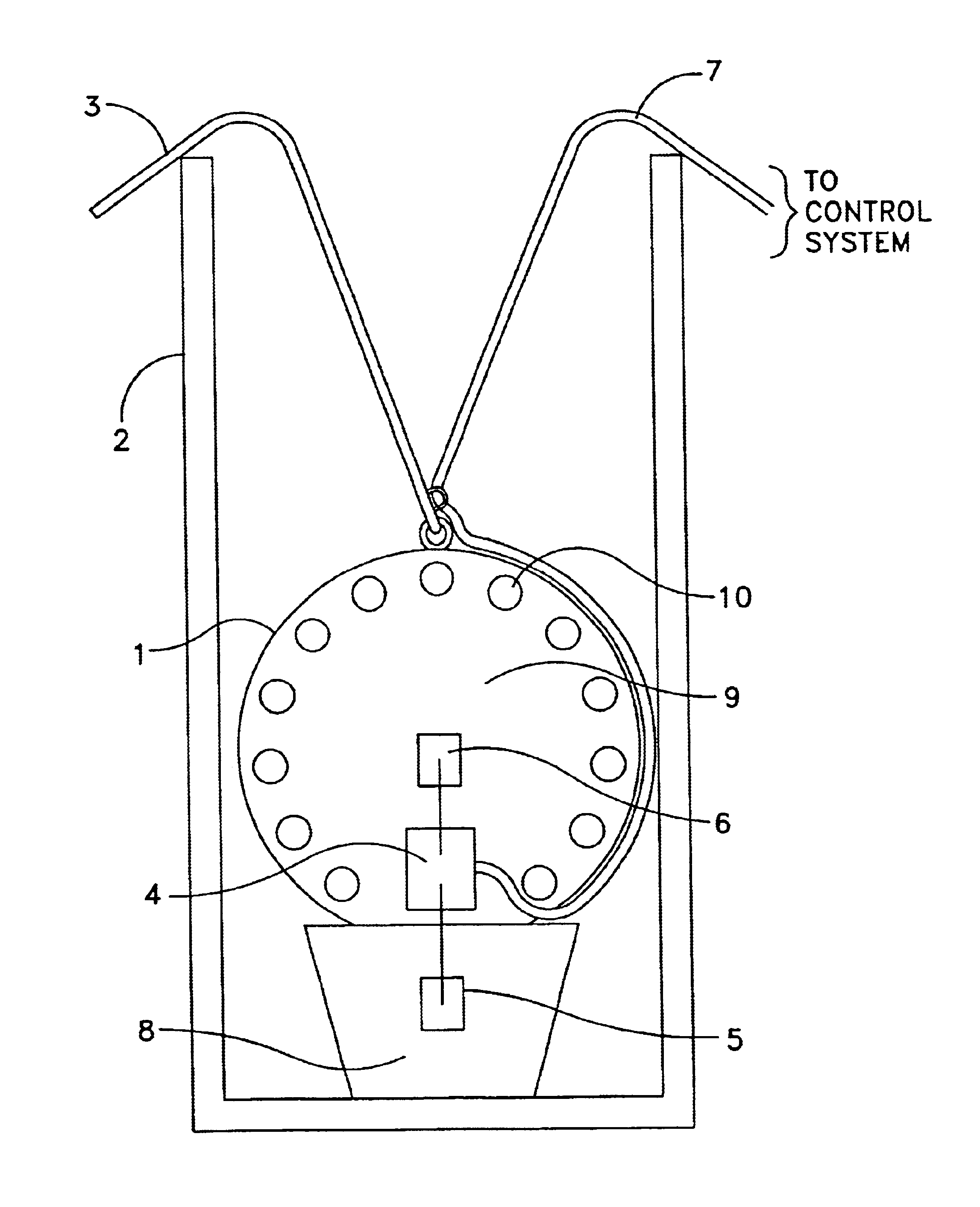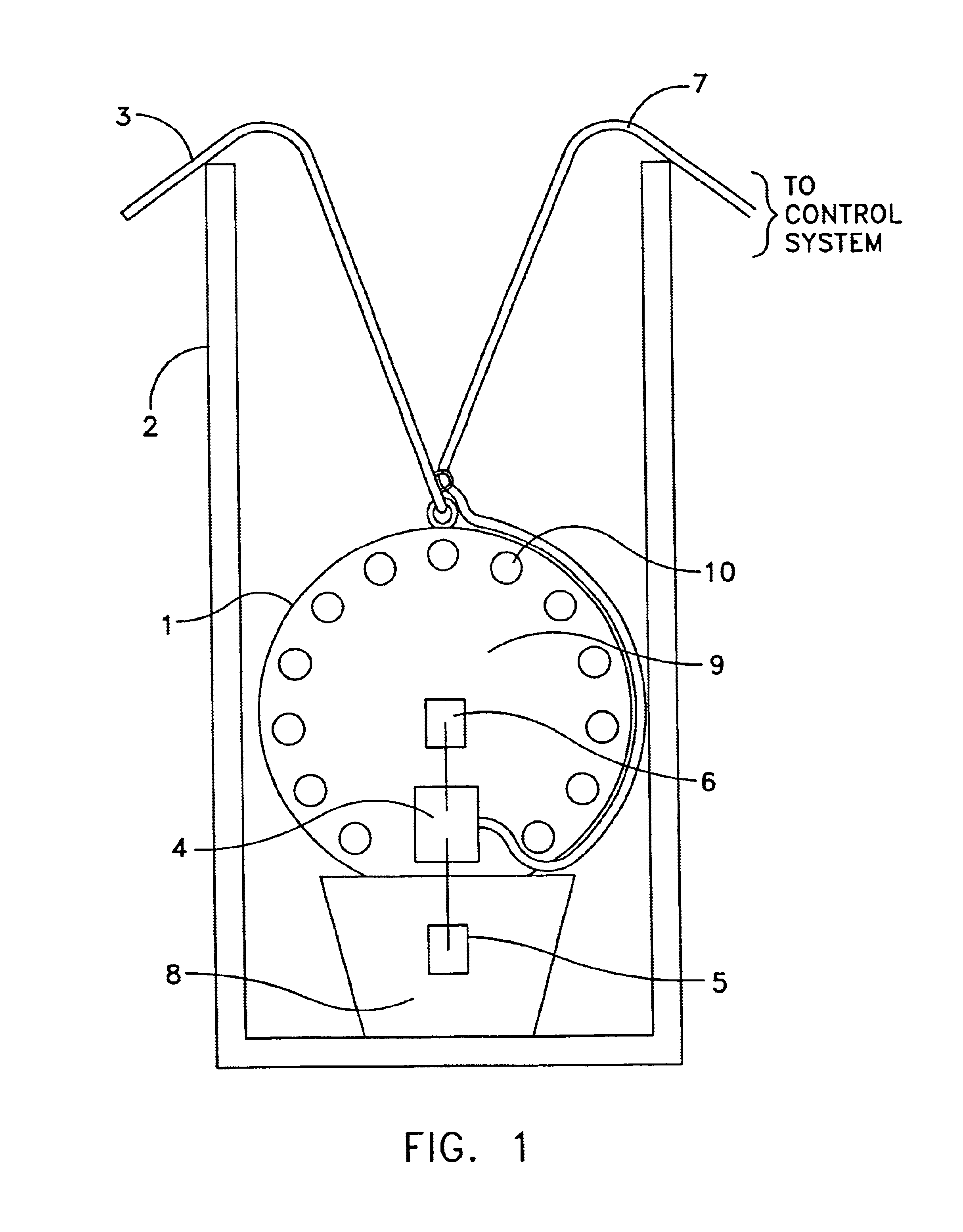The ignition of the lift charge also ignites a second black powder fuse, which provides a time
delay to allow the
projectile to reach a desired height above the ground.
Although black powder-based ignition systems are relatively easy to use, the fundamental limitations of the black powder fuse prevent the industry from achieving the timing accuracy and
repeatability necessary for precisely choreographed pyrotechnic displays.
Controlling the
delay time for a black powder fuse to better than + / −1% is extremely difficult; and even if this accuracy could be reliably achieved, it would still contribute to a total variability of 100 milliseconds for a 5-second fuse.
Achieving such accuracy is impossible with black powder fuses.
In addition, the inherent limitations of the black powder fuse also provide a source of potential failures that present real risk to both the display operators and the
proximate audience.
However, the use of a black powder fuse for the lift charge necessitates the
exposure of the black powder to the external environment of the shell.
Consequently the shell becomes much more sensitive to false ignition by burning materials from nearby pyrotechnic shells, resulting in unintentional “crossfire”.
If the lift charge of a shell is ignited but the time delay fuse to the break charge burns
too slowly, a “hangfire” occurs, in which the shell explodes as it returns to the ground, often near the display operator or in the audience.
Even more dangerous, if a hangfire explodes after the shell hits the ground, both the explosion and the falling shell itself present significant risks to the operator and audience.
If a fuse fails to ignite the lift charge, but the fuse continues to burn and ignites the break charge while the shell is still on the ground, a “
mortar burst” can occur, and the ignition products of the break can potentially ignite the break charges of all the adjacent shells of the display.
A break charge being ignited on the ground can result in serious injury to the operating personnel as well as the destruction of the entire display.
Such use of the e-match reduces the likelihood of crossfires, but does nothing to improve the timing of the break since a black powder delay fuse would still be required to ignite the break charge.
On the other hand, U.S. Pat. No. 5,627,338 by Poor et al., U.S. Pat. No. 5,623,117 by Lewis, U.S. Pat. No. 5,499,579 by Lewis, U.S. Pat. No. 5,335,598 by Lewis et al., U.S. Pat. No. 4,363,272 by Simmons, U.S. Pat. No. 4,239,005 by Simmons, and U.S. Pat. No. 4,068,592 by Beuchat describe methods to delay the firing action of an e-match based on electrical or pyrotechnic delays, but none of these methods are suitable to achieving the high accuracy required for choreographed displays.
A method of using an e-match is described by Poor et al. in U.S. Pat. No. 5,627,338, but even this technique is limited to about 25 milliseconds variability, which is still a factor of 25 worse than the desired 1
millisecond variability previously discussed.
A number of problems or faults can occur during the setup of a choreographed pyrotechnic display.
The pyrotechnic operator cannot easily detect many of these problems.
If e-matches are used to replace the black powder fuses, new problems unique to e-matches are possible.
For example, if e-matches are used to ignite the black powder lift charges, the electrical connections to the e-matches may be faulty.
If multiple e-matches are wired in parallel to a single electrical ignition source, the possibility exists that some e-matches will not be connected properly.
On the other hand, if multiple e-matches are wired in series, the possibility exists that the electrical ignition source will be insufficient to ignite all of the e-matches.
If e-matches are used to ignite both the lift and break charges, additional problems may develop.
For example, either or both of the e-matches may have broken wires.
Furthermore, since an
energy source is required to fire both e-matches (and the source for the break match must travel with the projectile), the possibility exists that either
energy source may be insufficient to ignite its corresponding e-match.
If, for example, the lift
energy source is sufficient to ignite the lift charge, but the break energy source is not sufficient to ignite the break charge, a dangerous hangfire can result, with
significant risk to the pyrotechnic operator and the audience.
 Login to View More
Login to View More  Login to View More
Login to View More 


